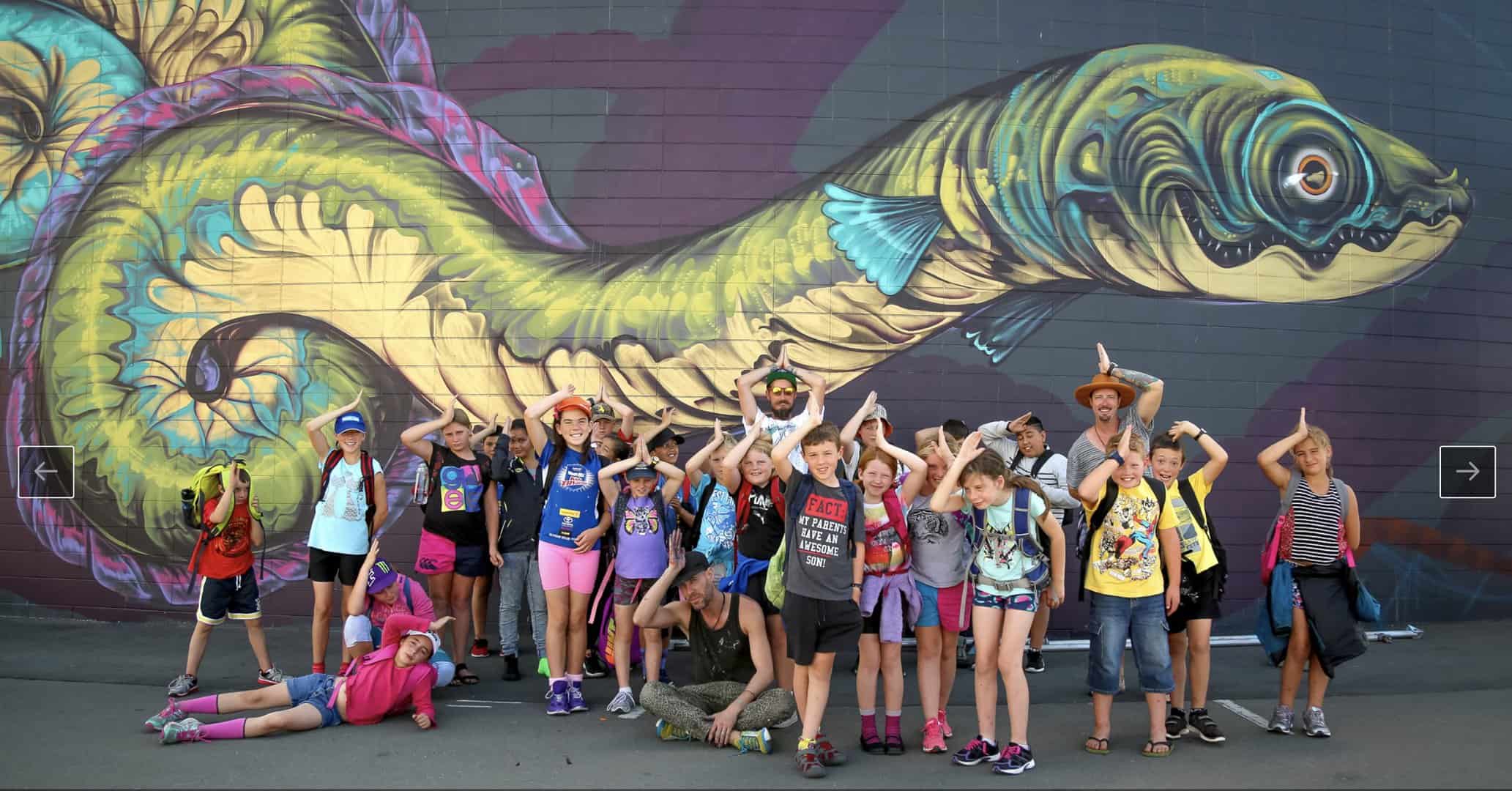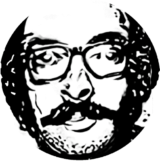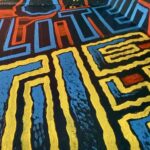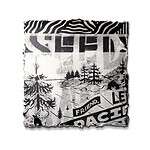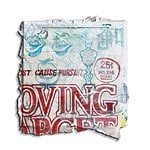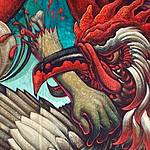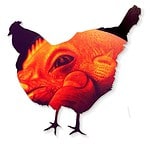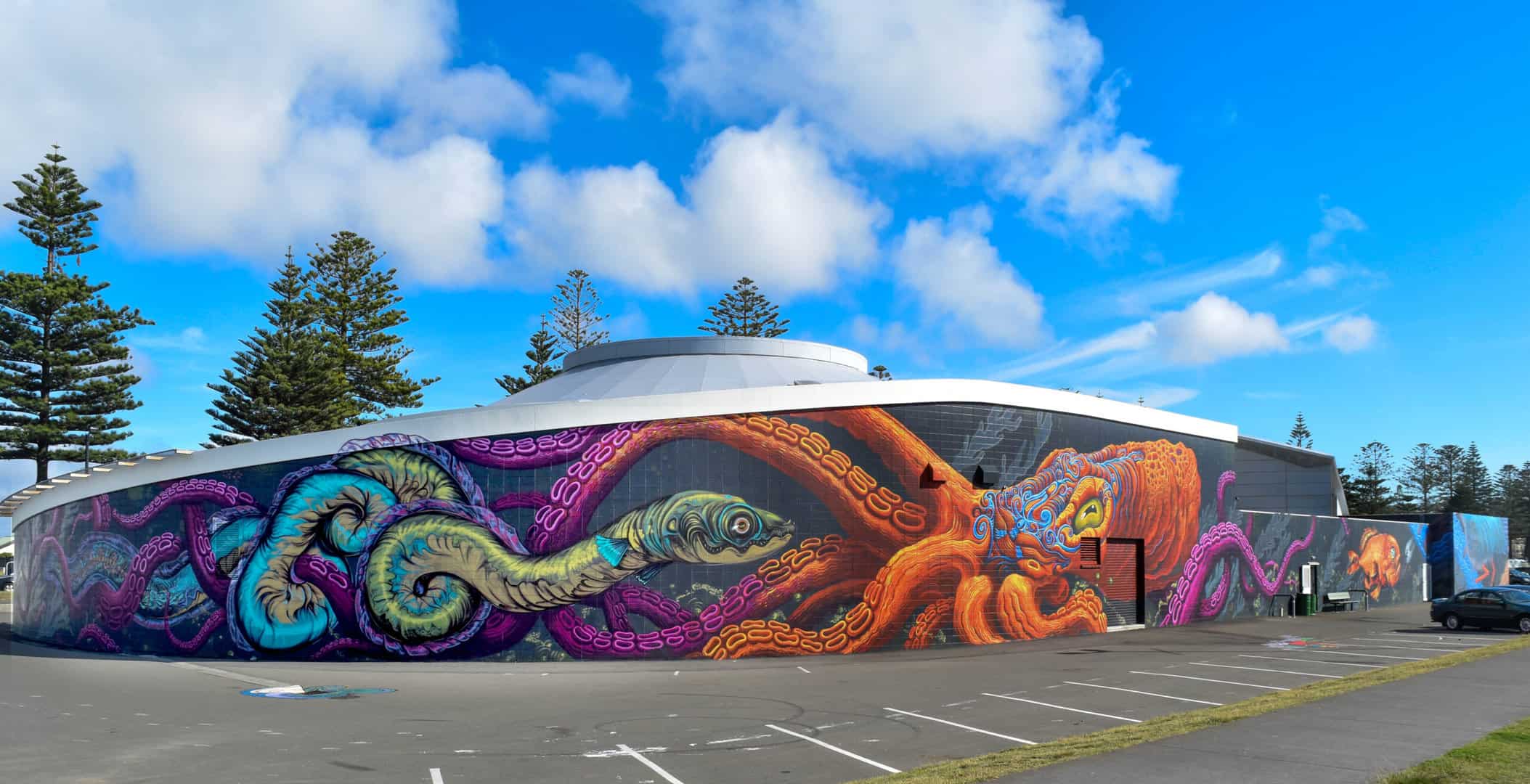
Napier Aquarium — SeaWalls
Seawalls — Napier aquarium — Cinzah collaboration
How do you put words to a universe of experience packed into 10 days?
This was by far one of the biggest walls of my career, weighing in at nearly 350 linear feet. I’ve since covered walls of significantly greater size, but what stands out with this project however is brevity of production, spread thick over a mere 4.5 days.
The was a collaboration between myself and the wildly talented Cinzah Merkens, painted on the face of the high-profile National Aquarium of New Zealand, located in the lovely art deco styled town of Napier.
This was a PangeaSeed Foundation / SeaWalls: Artists for Oceans production.
Turns out it’s not only about the size of your wall, in this case.
A LONG HAUL
Time and size are not terribly important factors when it comes to painting murals. In fact, the most powerful works of public art can be very small and easily overlooked. When crossing paths with a keen eye, a very intimate connection is invited…one that would never be possible to share en masse. This quality is impossible to achieve when speaking of moby dick murals.
The wall itself isn’t tall, maxing out at 25’ along the peak of its serpentine roof line. It’s substantial cinder brick length packing the biggest per square foot punch, as moving body and equipment from one end to the other takes precious time. In this context, the process requires a conscious conservation of resources moving from one ‘section’ to another.
Walls of a square and/or somewhat rectangle(ish) format are easy to capture in one glance or photograph. Very long hauls like this one require footwork. As one moves along its length, the composition reveals itself anew with each step along a very gently curved wall.
I loved painting this one, comforted by the constant companion of waves lapping against a smoothly polished black pebbled beach. I could paint well into the darkness of evening with the area flooded in light along a thin strip of parking lot between the building and a sinewing pedestrian path that ran near the water’s edge.
Truly one of the most majestic painting spots one could ever be offered by a community. Their trust for allowing Cinzah and I to do what we do best is forever appreciated.
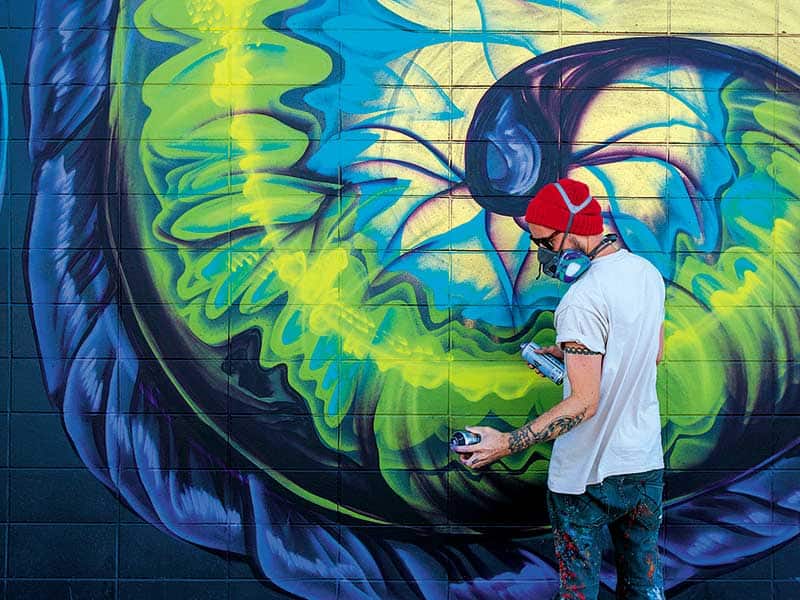
COLLABORATIVE CHALLENGES
I recall Cinzah painting his gigantic New Zealand long-finned eel before I started. Using spray paint exclusively, this man moves with the kind of incredible confidence achieved only by a very well practiced hand.
Cinzah, double fisting, was also one of the most important core administrative bodies for the festival. This required juggling a dizzying amount of balls in the air at every given point in time.
Swept into daily unforeseen responsibilities, a full-blown collaboration proved to be unrealistic, leaving the bulk of the process to me. These things happen without the remotest sense of hard feelings. This is especially true considering the heroic load on Cinzah’s shoulders.
Speaking from personal experience, festival production of this sort knocks good years off the end of a guys’ life.
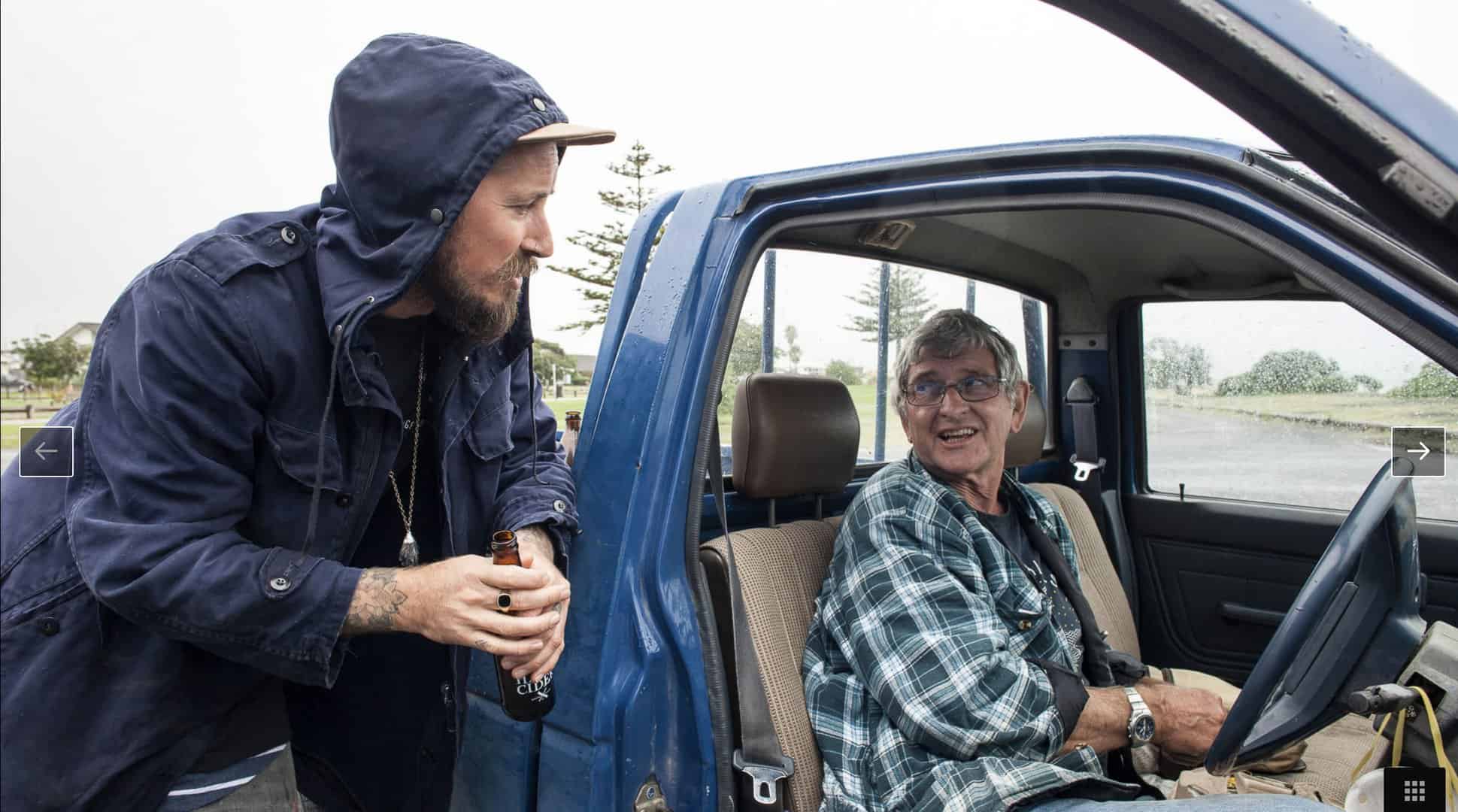
GO TIME
I too participated in the grounds production team, crashing on the floor of an over-shared and under-slept apartment full of administrative bodies.
Yoshi in particular is the stuff of pure legend. He shot footage all day everyday., under any and all conditions, with only a few spoken words of English under his belt. He then stayed up well into the wee hours sifting through and editing the day’s material at an utterly gruelling daily pace. His tireless efforts never failed to astound, and resulted in tools that became a fundamental aspect of message amplification drowning in oceans of content creation. This man rises to the top.
It was a truly amazing group of people, all of whom I carry great love for to the day. Many of these players wore double hats, as both artists and administrators, putting up BIG money where their mouth is.
I have very fond production crew memories. These include cooking around Napier with Chris Konecki (San Diego based artist who loves writing about himself in the 3rd person), Kanaka Maoli (Native Hawaiian) artist Kai’ili Kaulukukui (“Kai”), and Pete Findlay, a real salt and pepper rabble rouser around town. Pete has intimate connections with the unions, political parties, and biker gangs of the region.
For the crew, the first handful of days on every project like this are always maniacal, running around like chickens with their heads cut off, supplying participant artists with what they need and want to get started on their walls. Providing momentum and support at that stage is crucial to an artist working fiercely to give their best in that moment.
Getting artists lined up in a row can be a lot like herding cats. The ‘stress’ of this behind-the-scenes work is like the cord holding a hot air balloon down, straining hard under the pressures of pre-creative flow until that energy is allowed to let go.
Production time was always a mean mess of paint, buckets, food, weird requests pulling one in every direction at the same time, annd all manner of all high emotions. Someone’s lift was always in crisis mode, while someone else has no idea how to drive their own. Another’s always got stuck somewhere painful. You get the story.

WALL WORKOUTs
For the production crew, our workouts began well toward the end of the official festival window. Painting is always the best part of every day, despite whatever intensities may have been experienced. Painting under these intense conditions provides excellent opportunities to practice at full speed in wild abandonment to the creative process.
Less than five days for a wall of this scale, using brush, roller and bucket paint, is blazingly fast. Definitely a good way to get yer mural muscle on with that one big shoulder and arm.
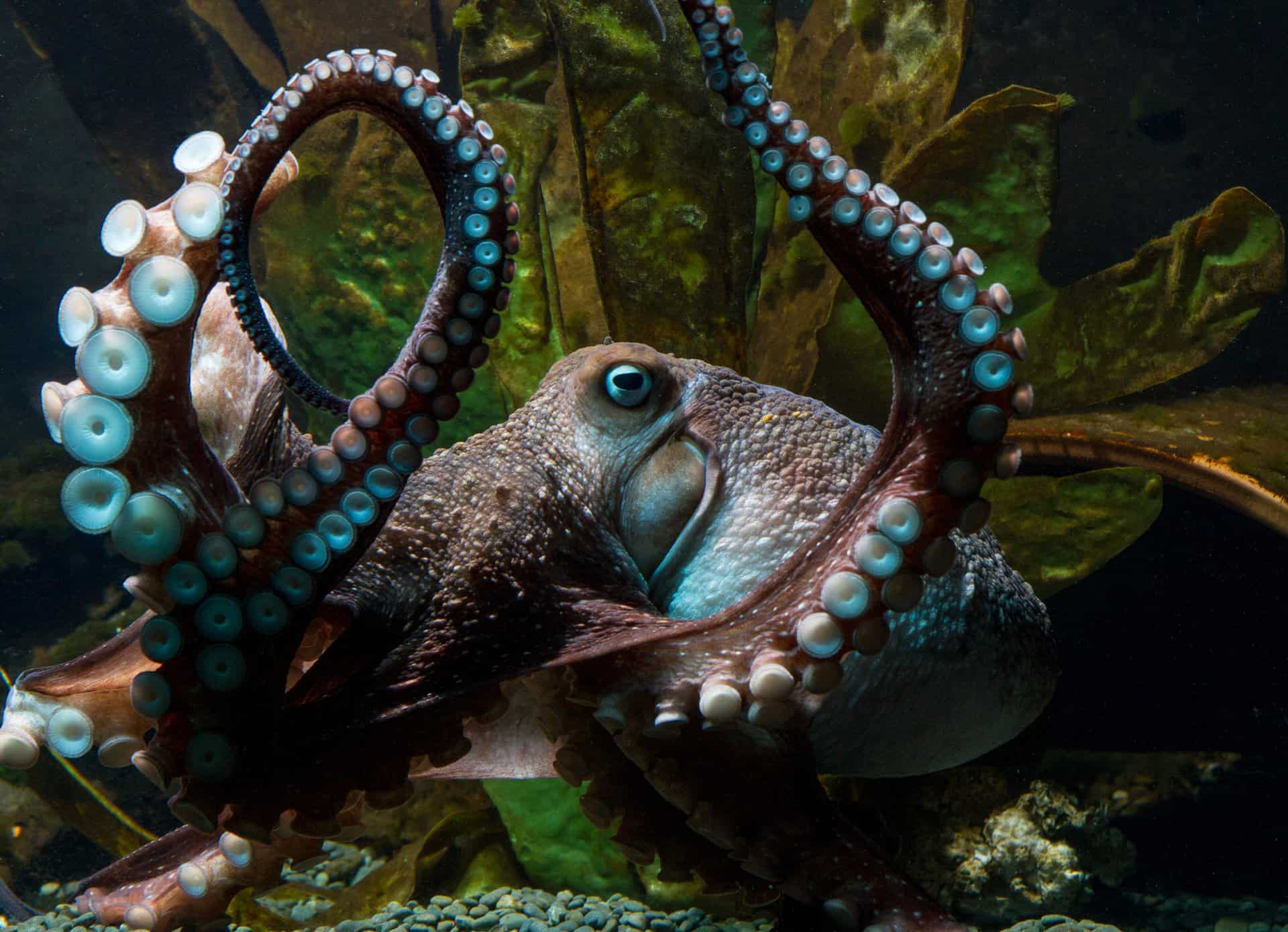
INKY’S BREAKOUT
A few months after we painted that town from head to toe, “Inky”, one of the much beloved aquarium octopus managed to make a break for it, “squeezing through the top of his tank, slithered across the deserted aquarium floor and shimmied down a 6-inch-wide (15 centimeters) drainpipe that — luckily for him — led directly to the sea.”
I’m sure many were sad to see him go. He probably went to see what all the commotion was about on the other side of the wall, dressed up in his portrait.
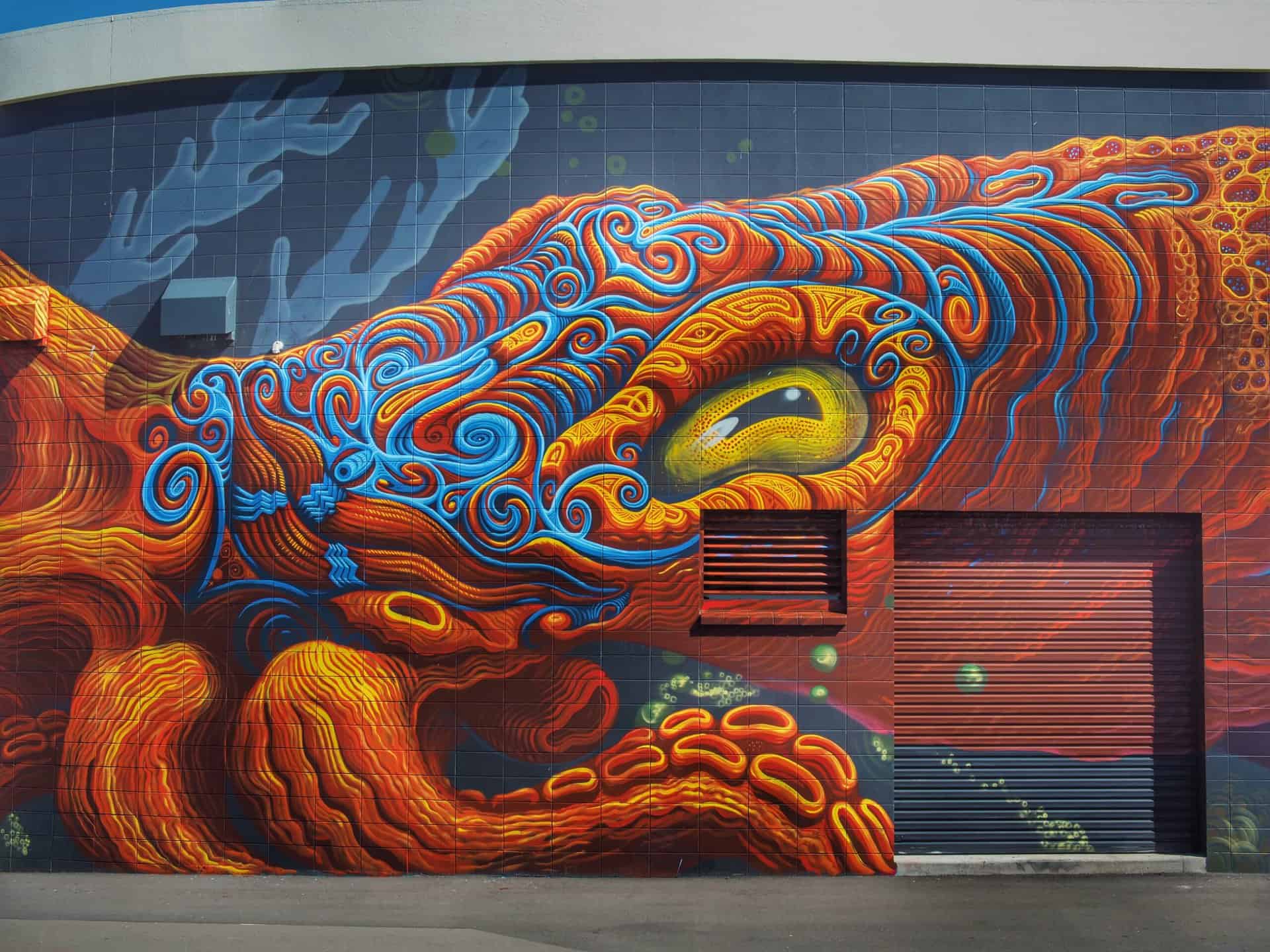
WILD LIFE
The biggest feature of this mural is the interaction between Cinzah’s opalescent eel and a giant octopus covered in tā moko. This is one of the five main Polynesian tattoo styles traditionally practiced by the Māori people, indigenous to New Zealand.
Also included are fish and crane, the latter which came to visit the aquarium on a regular basis. This bird would periodically watch me paint. It seemed undisturbed by my company, even with the loud occasional beeping of my orange flying carpet.
All of the birds, reptiles, and fish on this wall are portraits of this wild life, indigenous to the region.
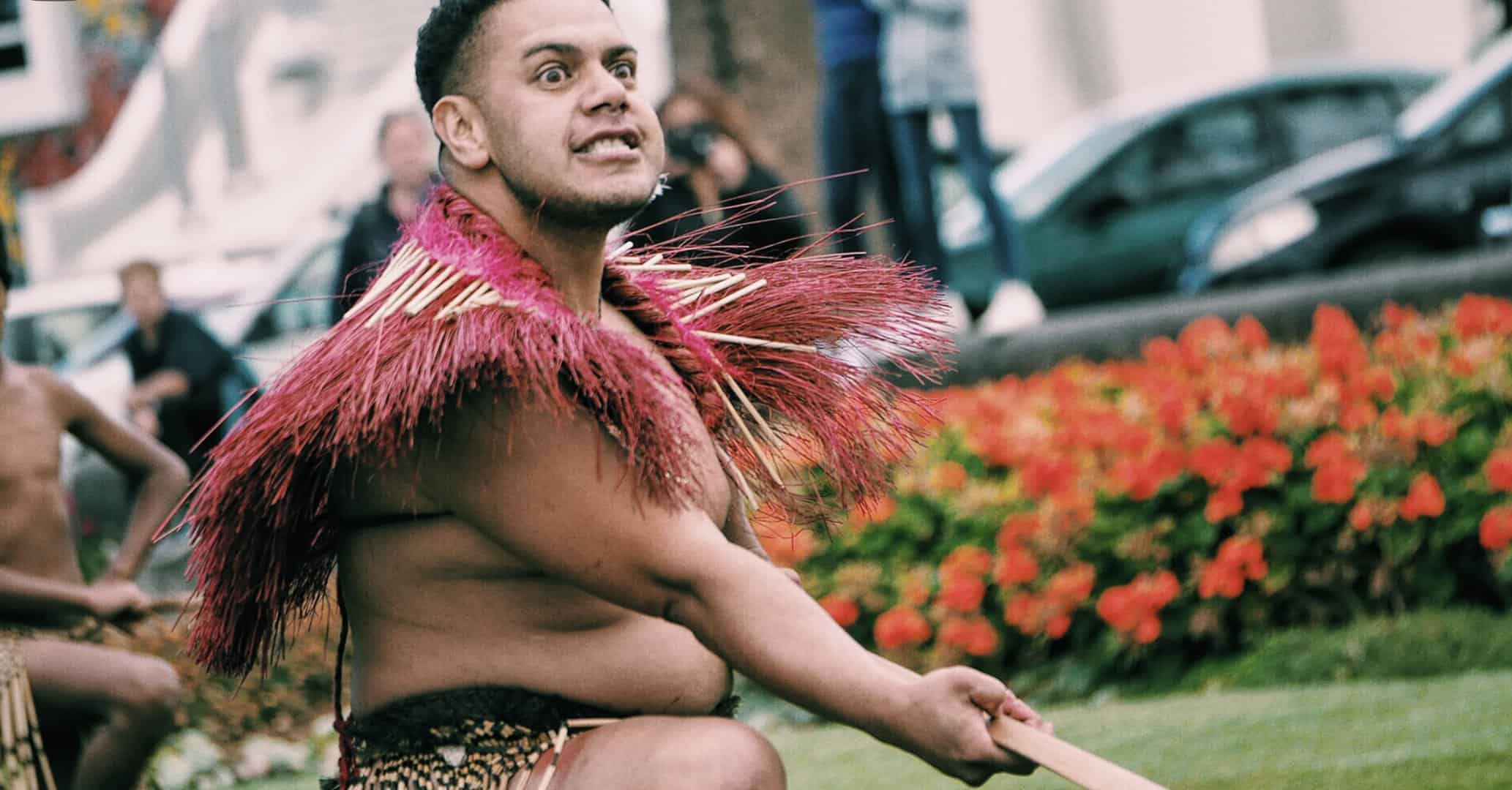
SUPPORT LOCAL
These festivals are not possible without boatloads of local volunteer support. These efforts epitomize the importance of a community coming together to better co-manage shared resources, starting with “creativity”. Being able to do so is the root solution to all the world’s present ills, including environmental and socio-political problems.
It’s not the murals themselves that do the hard work. Instead, it’s a group of people willing to give generously of their time and energies to become artists of change.
Cinzah and his partner (at the time) — Ash Scott — were superstars. Ash and a network of friends prepared the MOST amazing festival meals I’ve ever experienced, for all involved with the project, every day. This was enough fresh, organic, nourishing vegan meals packed lovingly into small compostable cardboard boxes and containers to feed a small army of ‘artivists’.
Pete Findlay, mentioned above, and his infinitely optimistic partner Maxime Boag were key players behind the scenes. They providing access to Napier’s political machinations, opening doors right left and centre.
There were many others, including a raft of extremely talented local artists who generously brought their mahi to the table
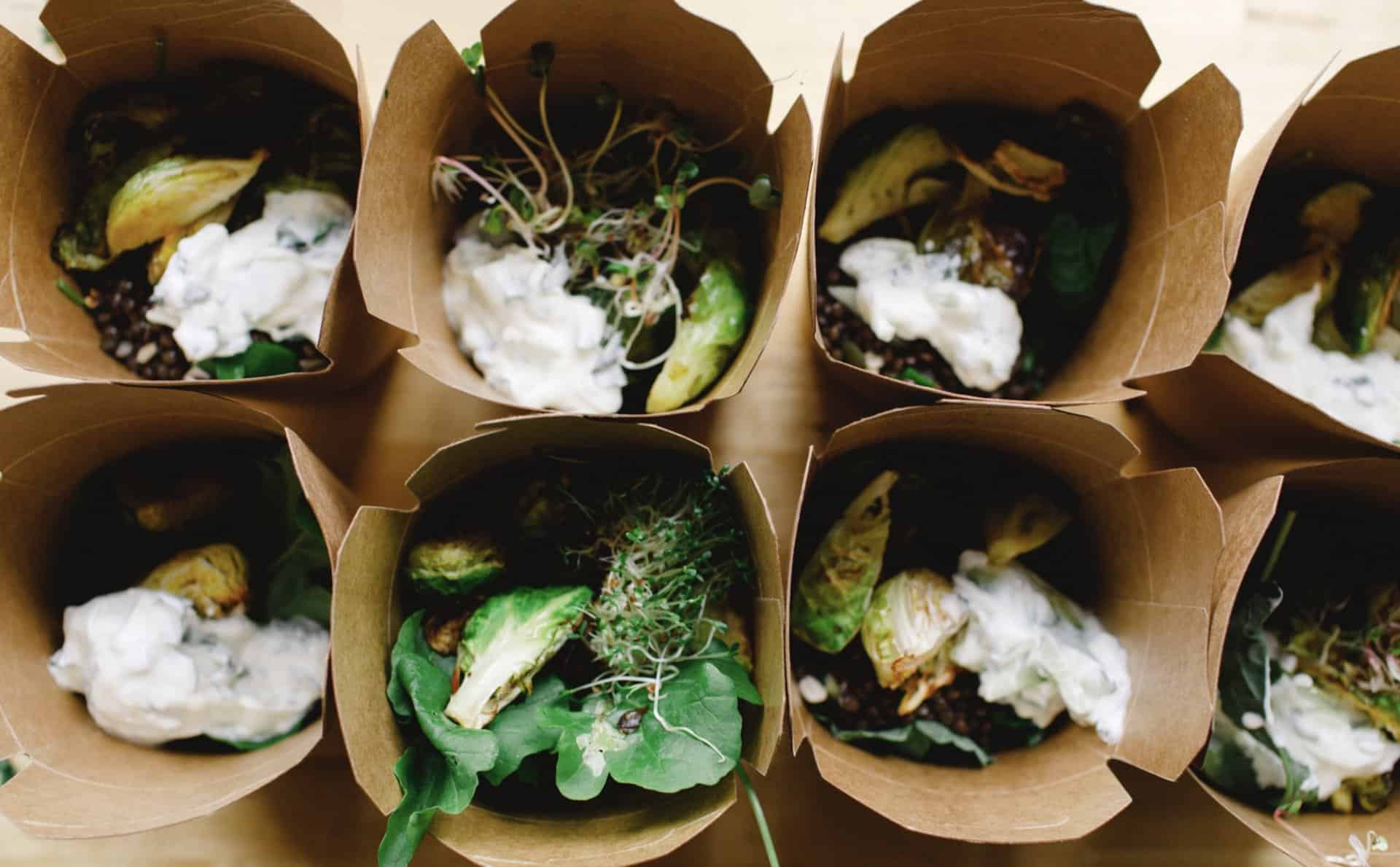
THINGS COME AND GO
Near the end of the project, late one evening, my knapsack got swiped, along with a few things of irreplaceable value. The community went into immediate action, and fortunately, the most important stuff got returned (my sketchbook). The rest is just … stuff. It was a beautiful example of the level of genuine support and love that was abundantly present in this project.
This is a really beautiful article about the experience, from the New Zealand Herald.
And the following is another excellent article, which will give the reader a much better contextual and textural understanding of this remarkable event:
